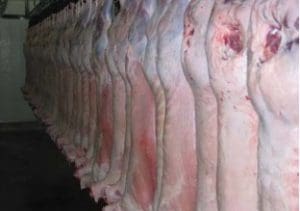 STOCK retention amid already tight sheep and lamb supplies, strong sheep and wool prices, processing plant closures and a string of public holidays have been blamed for a considerable contraction in Australian mutton and lamb slaughter in April.
STOCK retention amid already tight sheep and lamb supplies, strong sheep and wool prices, processing plant closures and a string of public holidays have been blamed for a considerable contraction in Australian mutton and lamb slaughter in April.
Meat & Livestock Australia said results from the February MLA and AWI wool and sheepmeat survey suggested that more than 60 percent of respondent producers were intending to retain ewes and almost 40pc were planning to increase ewe numbers.
Of those producers who planned to expand their ewe flocks, most indicated they would achieve this through retaining replacements and older ewes, MLA said.
These producer intentions to hold on to stock have further impacted the already short supply of both lambs and mutton. In April, the number of lambs processed was 1.56 million head, 21pc less than April 2016, according to ABS data. Mutton slaughter decreased 38pc year-on-year, to 624,984 head, MLA said.
This decline was predominantly driven by a reduction in numbers in Victoria, where mutton slaughter dipped to 161,067 head, down 39pc. Lamb processing declined 17pc to 733,932 head.
South Australia, Western Australia, Tasmania and Queensland also recorded downward slaughter trends in April.
However in NSW, mutton slaughter in April was similar year-on-year, at 126,537 head. NSW lamb slaughter declined 24pc from year-ago levels to 331,823 head.
MLA said the lower slaughter meant production decreased by similar margins. Mutton production was offset slightly by a 2pc increase in the average carcase weight to 24.19kg. Meanwhile lamb carcase weights remained steady year-on-year at 23.10kg.
Given the retention of stock and the seasonal decline in supplies, stock available for slaughter is anticipated to remain tight until August/September when the spring flush comes through, MLA said.

HAVE YOUR SAY